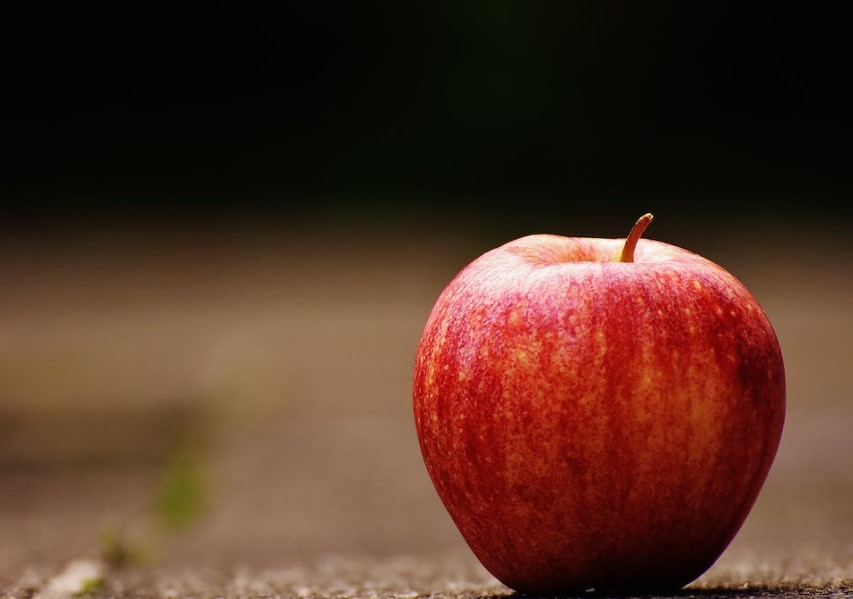Have you ever wondered how much an apple weighs? With so many different varieties of apples available, it can be difficult to know what the average weight of an apple is. In this comprehensive guide, we will explore how much an average apple weighs, what factors can affect the weight of an apple, and why it’s important to know the weight of an apple. Whether you’re a home cook looking to make the perfect apple pie or a dietician trying to calculate nutritional information, this guide has everything you need to know.

Varieties of Apples
There are over 7,500 varieties of apples worldwide, ranging in color, size, and flavor. Each variety has its unique characteristics. Here are some popular varieties and their average weight:
- Granny Smith: These green apples are known for their tartness and crisp texture. An average Granny Smith apple weighs around 6 ounces or 170 grams.
- Red Delicious: This classic red apple is sweet and juicy, frequently used for eating or in salads. An average Red Delicious apple weighs around 7 ounces or 198 grams.
- Honeycrisp: These apples have a crunchy texture and a sweet, tangy taste. An average Honeycrisp apple weighs around 8 ounces or 227 grams.
- Gala: These smaller, striped apples are sweet and have a crisp texture. An average Gala apple weighs around 5 ounces or 142 grams.
- Pink Lady: These apples have a distinct pink color and a tart, sweet taste. An average Pink Lady apple weighs around 7 ounces or 198 grams.
The Average Weight of an Apple
Can vary depending on the variety and the size of the apple. However, on average, most apples weigh between 70-100 grams (2.5-3.5 ounces). Keep in mind that this is just an average, so there will be variations depending on the specific apple you’re measuring.
Factors that Affect Apple Weight
Several factors can affect the weight of an apple. One of the biggest factors is the variety of apples. For example, a Gala apple will weigh less than a Granny Smith apple because it is a smaller apple variety. Other factors that can affect the weight of an apple include the maturity of the apple, the growing conditions, and any damage or bruising.
- Maturity: An apple harvested earlier will weigh less than one that’s picked at its peak. This is because the apple hasn’t had time to fully develop and absorb as much water.
- Growing Conditions: Apples that grow in areas with more water and nutrients will be larger and heavier than those grown in less ideal conditions.
- Damage or Bruising: If an apple has been damaged or bruised, it may weigh less than a healthy apple because some of the flesh and juice has been lost.
Why Knowing the Weight of an Apple is Important
Knowing the weight of an apple can be important for several reasons. For example, if you’re following a recipe for apple pie, you’ll want to know how many apples to use based on their weight. Similarly, if you’re trying to calculate the nutritional content of an apple, you’ll need to know its weight. Additionally, knowing the weight of an apple can help you make more accurate cost calculations when purchasing apples in bulk.
Different Ways to Weigh an Apple
There are several ways to weigh an apple, depending on what type of equipment you have available. If you have a kitchen scale, this is the easiest and most accurate way to weigh an apple. Simply place the apple on the scale and record the weight. If you don’t have a kitchen scale, you can estimate the weight using a produce chart or by comparing it to other objects of known weight.
- Using a Kitchen Scale: Place the apple on the scale and record the weight.
- Using a Produce Chart: Check a chart that lists the average weights of different apple varieties to estimate the weight of your apple.
- Comparing to Known Weights: Compare the weight of the apple to similar objects of known weight. For example, a small apple might weigh about the same as a tennis ball.
Best Practices for Measuring Apple Weight
If you want to get the most accurate reading of an apple’s weight, there are a few best practices to follow. Start by selecting a healthy apple that has no damage or bruises. Make sure to remove any stickers or tags from the apple, as these can affect the weight. When placing the apple on the scale, make sure it is centered and that the scale is calibrated properly. If you’re using a produce chart or comparing to an object of known weight, make sure to choose a similar variety of apples for the most accurate estimate.
How to Choose the Perfect Apple
Now that we know the factors that affect the weight of an apple, let’s talk about how to choose the perfect one! Here are some tips:
- Look for apples that are firm and free of bruises or cuts.
- Check the stem and bottom of the apple. If they’re still green, the apple is fresh.
- Smell the apple. If it smells fresh and fruity, it’s likely to be ripe.
- Consider the variety. Do you prefer a tart or sweet apple? Crunchy or soft? Choose a variety that suits your taste buds.
Conclusion
In conclusion, knowing the weight of an apple can be an important tool for home cooks, dieticians, and anyone who regularly works with apples. The average weight of an apple is between 70-100 grams, but this can vary depending on the variety, growing conditions, and other factors. There are several different ways to weigh an apple, including using a kitchen scale, using a produce chart, or comparing it to objects of known weight. By following best practices for measuring apple weight, you can ensure that your measurements are as accurate as possible.
FAQ
[faq-schema id=”3050″]

Comments